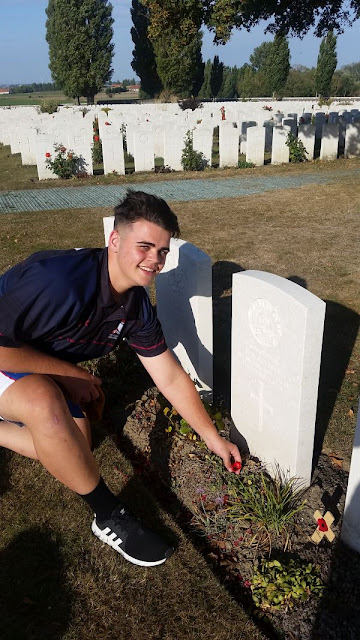We started our tour at Hill 60; an area of ground which remains relatively undisturbed since the end of the Great War. During the Great War there was fierce fighting here, and the hill changed hands between the Germans and the Allies several times. Both sides also dug tunnels and planted mines underneath the hill. Because of this, the remains of many soldiers from both the Allied and German forces still lie here.
The next stop was Langemark cemetary. Unlike the previous cemetaries we had visited, Langemark was a German cemetary. The contrast of the German memorial to the Commonwealth ones that we had visited in the past days was chalk and cheese. Massive Oak trees surrounding the memorial blocked out any sun trying to get in. Where the Commonwealth headstones were white the German ones were dark and moody. The most outstanding feature, however, was that unlike Commonwealth plots where every soldier was given an individual burial and headstone, the German soldiers were buried 5-6 to a plot. In one area 25000 Germans had been buried together as comrades in the same grave.
The contrast was even more prominent when we visited our next stop; Tyne Cot cemetery. Tyne Cot is the largest Commonwealth War Graves Commission cemetery in the world. It is now the resting place of more than 11,900 servicemen of the British Empire from the First World War. There were two Townsville soldiers that we located and Tour Captain Zac Thomson led the group in reciting the 'Ode of Remembrance' over their final resting places.
 |
| Terrence Rooney laying a poppy at the Headstone of Private P.B Rooney 31st BTN Australian Infantry |
The boys presented Fillip with a IPC Rugby tie to thank him for his time and wealth of knowledge and we got back on the bus and made our way to the ferry to take us across the English Channel to the 'Motherland'.

No comments:
Post a Comment